Graham Reid | | 6 min read
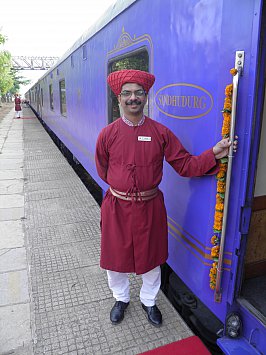
In the historic, temple-filled and rather wealthy Indian city of Kolhapur a couple of hours north of Goa there's a glimpse of a past which is appealingly distant but also curiously contemporary.
The day I arrive at the New Palace – an imposing 150-year old building in the Indo-Gothic style commanding spacious grounds – it is the day of the famously crazy and colourful Holi festival.
In the grounds kids are throwing brightly coloured powder at each other, among them the children of the palace's current occupant, the Maharajah whose family have extended powerful influence in this region for over a century.
And right here we have it: the richly coloured tapestry of India with its ancient rituals and religions, tiger hunting, cricket on the green, mysterious customs, elephant fighting, uprising against the British and the end of those days we reduce to the shorthand of “the Raj”.
The New Palace is a handsome portal back to the past because inside are the scuffed artifacts of an often quaintly archaic time. But because the family is still here in another wing and the kids are playing on the lawn it all still seems very much alive.
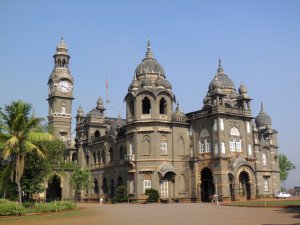 Unlike those stately home of Europe
where discreet staff polish the knobs on bedsteads and plump up the
cushions in the study, the public rooms of the New Palace have a
faded and dusty grandeur. In the trophy room are the mounted heads of
tigers, deer, stags, sambar and more. The family patriarch Rajarshi
Shahu Chhatrapati in the early 20th century was a fine and
frequent big game hunter who also introduced wrestling and pioneered
Indian cinema in the region, and there is a whole room of cavalry
swords, elephant guns, Lee Enfield rifles, chain-mail armour, savage
knives . . .
Unlike those stately home of Europe
where discreet staff polish the knobs on bedsteads and plump up the
cushions in the study, the public rooms of the New Palace have a
faded and dusty grandeur. In the trophy room are the mounted heads of
tigers, deer, stags, sambar and more. The family patriarch Rajarshi
Shahu Chhatrapati in the early 20th century was a fine and
frequent big game hunter who also introduced wrestling and pioneered
Indian cinema in the region, and there is a whole room of cavalry
swords, elephant guns, Lee Enfield rifles, chain-mail armour, savage
knives . . .
The grand hall once comfortably seated – maybe still does – 150 courtiers and photos in the corridor – cricket and football teams with impressive moustaches, troops in formation, tiger hunts – speak of a time not that long ago, but also long gone. The air here is thick with the Great War, the Raj, mustiness, tradition and the past.
The New Palace is a remarkable place, but just one of dozens of such memorable sights on a seven night/eight day journey through Maharashtra state on the famous luxury train the Deccan Odyssey.
Departing from Mumbai (locals still call it Bombay), this train – in which passengers have their own cabin and butler, and can enjoy two dining cars, a reading room and well stocked bar – heads down to Goa, loops back inland through Kolhapur and then goes up to the breathtaking historic sights of Ellora and Ajanta before returning to its departure point.
Along the way are stops in small stations and large cities, air-conditioned coach trips to ancient ruins, old Mogul-era forts, beautiful temples, heritage houses (like the remote 16th century Menezes Braganza home which has been in the same family for seven generations), rowdy markets and busy bazaars, sweeps of almost deserted beach and . . .
It is “Incredible India!” as the tourism promo-slogan has it.
That much is true, but frankly I never got train travel. You see something interesting and just keep going past it, right? But the Deccan Odyssey – because of its comfortable cabins, exceptionally friendly and professional staff, and those day trips – won me over. With all the convenience of a tiny cruise ship (you unpack once and have the privacy of your own self-contained room) and the often stately pace through parts of India you must see but rarely do (crowded train stations, slum kids playing cricket with make-shift wickets by the side of the track), this is a journey of comforts but also encounters.
To be honest, the Deccan Odyssey journey of discovery began rather disappointingly. On the first day the cruise down the Karli River near Sindhudurg was a non-event and some passengers didn't much rate the boat trip and visit to Sindhudurg Fort (which I thought was fascinating, a whole island turned into a fortress). But after that . . .
The journey – mostly through Maharashtra but also into the Goa region – reaches an undoubted high point in its closing overs, if we can borrow a phrase from ubiquitous cricket.
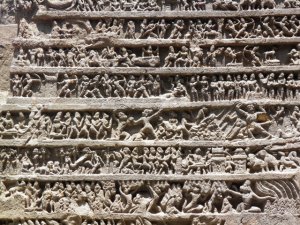 The Ellora Caves near the city of
Aurangabad – where there is the beautiful Bibi Ka Maqbara, a
mausoleum which bears an uncanny resemblance to the Taj Mahal, get
the photo and fool your friends – is a UNESCO World Heritage Site
which defies easy explanation but will have you struck dumb with
wonder.
The Ellora Caves near the city of
Aurangabad – where there is the beautiful Bibi Ka Maqbara, a
mausoleum which bears an uncanny resemblance to the Taj Mahal, get
the photo and fool your friends – is a UNESCO World Heritage Site
which defies easy explanation but will have you struck dumb with
wonder.
Billed quite rightly as “the greatest example of cave-excavation architecture in the entire world”, that description hardly does them justice.
Here, for two centuries after 6AD, Buddhist, Hindu and Jain workmen and designers excavated masses of rock to create a series of ornately carved temples and monasteries which once attracted pilgrims, and now tourists.
The scale and detail of this astonishing project during which the various faiths often worked simultaneously (there was enough of Charandari mountain for everyone to dig away in) occupied generations of artisans. And it was top-down, as opposed to foundation-up, work. The temples you see at the Kailashnath complex – which spans 70m by 50m and is more than 30m high – are what were left when over 200,000 tons of rock was excavated.
Everything you see was once mountain, right down to the most intricately carved deities and decorative filagrees of stone. What you should be looking at is the space and air around them and imagining that originally that was all solid rock.
The Ellora Caves, 34 in total, are one of the wonders of this world, not just for the sheer scope and scale of their construction but as a symbol of religious tolerance all those centuries ago in what we might, with the arrogance of our modern age believe to be a less sophisticated time. This is evidence we have a lot to learn from the past where religions could co-exist.
Many of the caves were also brightly painted – look closely and you may see some remaining hints of vivid lapis lazuli – but for the full Technicolor panorama of brightly painted caves you need to visit nearby Ajanta, which the Deccan Odyssey tour also includes the following day.
If Ellora seems just so extraordinary to be almost inexplicable – believe me, conversations in the bar that night will all be about caves and photos will be compared – then Ajanta is where religion, culture, craftsmanship and sheer back-breaking work reach a crescendo.
The cave complex at Ajanta high on the Deccan Plateau – very remote so you'll be pleased to have that air-con coach from the train – are even more ancient. They were excavated between 2BC and 7AD and were a Buddhist retreat. That so many of the murals still exist is astonishing, but here they are: stories and gods; beautifully carved and delicate bodhisattvas; massive Buddhas, exterior figures eroded almost into invisibility by the centuries of wind and rain and blistering heat . . .
Again, tired but happy, you'll doubtless join your fellow travelers in the dining cars or bar to shake your head at what you've seen.
But the Deccan Odyssey journey is not all historic sites. You'll come home with photos and trinkets from marketplaces, memories of the old and colourful Portuguese streets of the Fontanhas at Panjim, your senses swimming with the rich odours and tastes of exotic spices from dinners, street food or the Sahakari Spice Farm (watch out for elephants!); the ears and heart seduced by sound of sitars and flutes from an on-board performance . . .
On my first day, after my butler Harish – whom I hope you get because he's charming – had directed me to my cabin with its huge tinted window (which allowed me to see India outside but not Indians to see me inside), I went to the comfortable bar, pulled up a well cushioned seat and ordered a beer.
As the train pulled out of Mumbai I watched the endless stream of anonymous faces on the platform, rich and poor alike blurring into each other as the train picked up pace. The rocking of the train was matched by the urgent tickle of tabla drums on the sound system and as the crowds thinned out and the platform gave way to dirty slums, strange advertisements, rundown housing then open spaces and villages where kids were playing cricket, I got a sense of excitement and anticipation.
This was one of those poignant incidents in life where the moment found its counterpart in the increasing tempo of the clacking wheels and the urgency of movement.
I felt an adventure starting. It would be air-conditioned and comfortable for sure, would come with excellent meals, a necessary cool beer at the end of the day (sometimes the excellent local Honey Bee brandy as it turned out) and I'd be in the company of interesting fellow travellers also there for the adventure.
I wasn't wrong. India just kept delivering on a daily, hourly even, basis.
I took hundreds of photos in the eight days but memory – which comes with smells, sounds and tastes a thousand photos can never capture – is a fine thing too.
The comfortable convenience of the Deccan Odyssey offers memories for a lifetime. Or, as the Hindus might have it, for more than one lifetime.

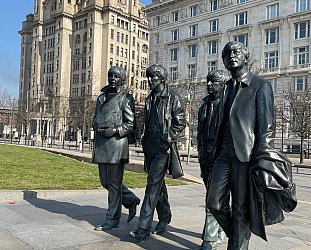


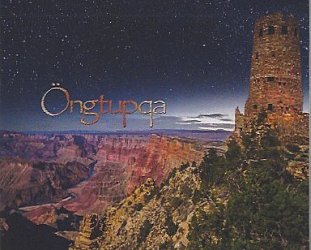
post a comment